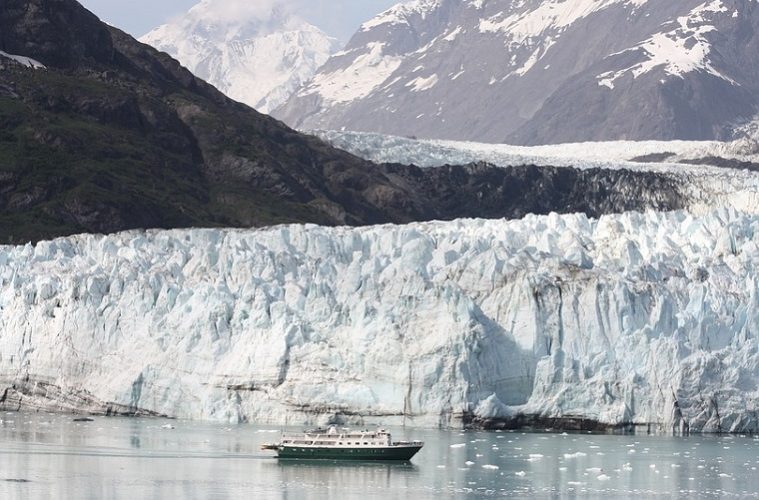Alaska – Among more than three million acres of mountains, rainforest, and fjords within Glacier Bay National Park, Alaska, are ever-decreasing remnants of the Little Ice Age Glacial period. The 400-year period, which ended sometime in the late 1800s/early 1900s, brought colder winters and summers to Europe and North America, and lakes, rivers and seas were frozen solid.
Glacier Bay National Park is one of the highlights of Alaska’s Inside Passage and the dynamic glaciers within the 25-million acre World Heritage Site – one of the world’s largest international protected areas – draw tourists hoping to witness the incredible phenomenon ice calving.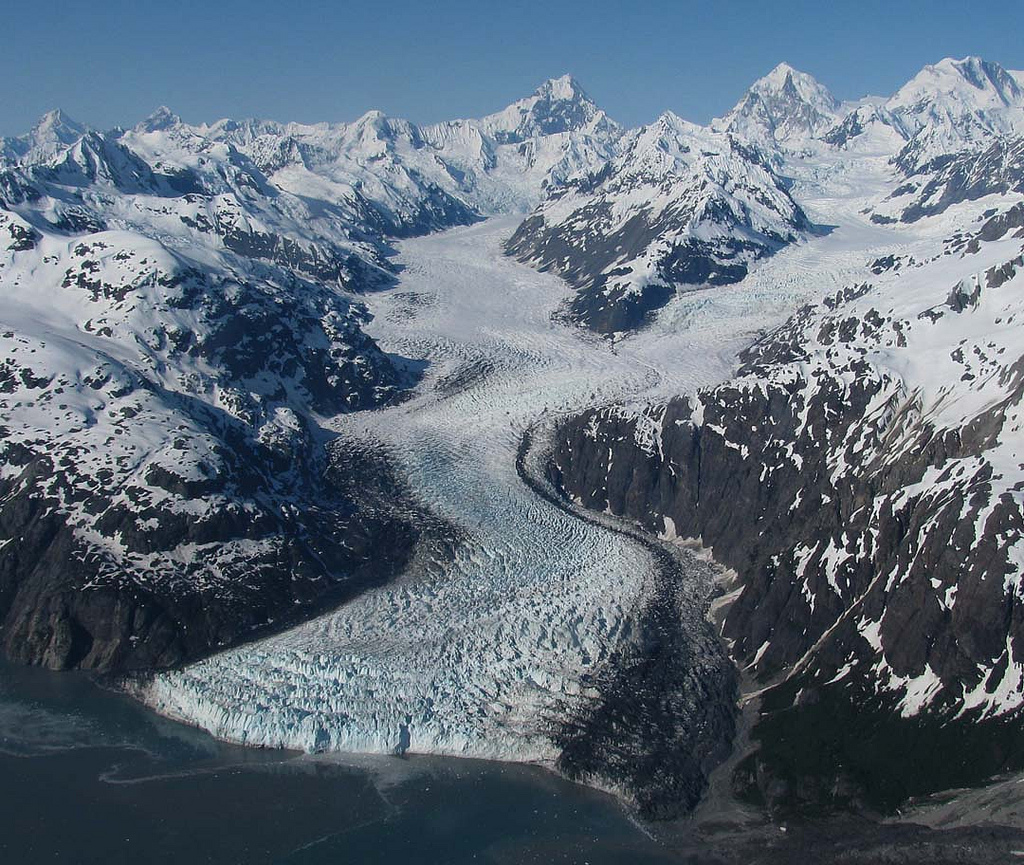
Ice calving produces icebergs, or growlers, when a mass of ice breaks away from a glacier, ice front, ice shelf or an iceberg. It is normally caused by the glacier or ice form expanding and when the glaciers in the bay calve, a sounds echoes across the landscape. First is a crack, or a loud boom, that echoes across the bay, before the ice breaks loose and crashes into the water causing enormous and often hazardous waves.
We visited Glacier Bay by cruise ship, arriving in the glacial waters of the Johns Hopkins Inlet shortly after dawn. Our passage to the glacier had taken us under blue skies and thick, drifting white clouds, through deep, dark blue water thick with drifting ice bergs. It’s not a journey you can do without thinking of The Titanic.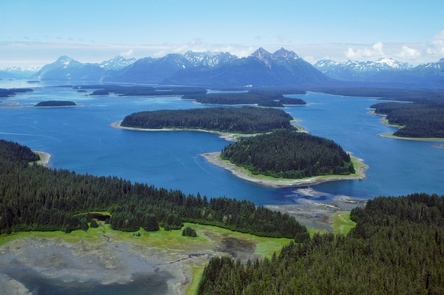
Access to the inlet is limited, and we are fortunate to have anchored two miles away (in safety), facing the mile-wide glacial front of the Johns Hoskins Glacier, one of the few advancing tidewater glaciers that remain.
Contrary to popular belief, ice isn’t white. It’s a variety of colours ranging from a glacial blue to a filthy grey-brown. We know that the 250 feet of glacier rising out of the inlet waters is 250 feet thick below the frigid surface. Calving promises to be epic.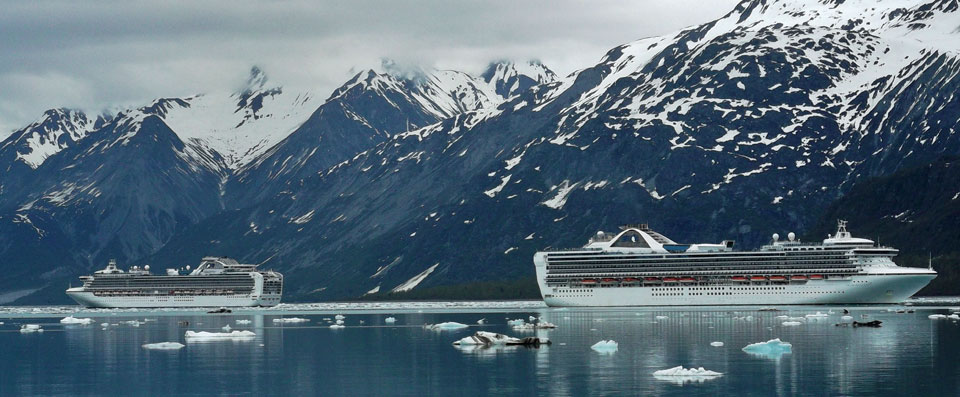
There’s a strange stillness among the people facing the glacier. Glacier Bay is considered a place of hope and sanctuary, inspiration and history, and a land of dynamic change. It’s this very change, in the wake of dramatic glacial movements, that we’re waiting for.
We’re not disappointed. A noise like a gunshot rings out, a noise that’s recreated in surround sound as it bounces off the water and land masses – the ice is cracking. In front of our eyes, a massive cliff of ice drops into the sea with a sonic boom and an enormous wave rolls across the bay, smoothing out before it comes near us, safely moored beyond its reach. The waters close around the newly-calved iceberg and it sinks to unknown depths in the cold inlet waters, before re-emerging – the uppermost part visible, while the majority remains hidden, and threatening, below the surface.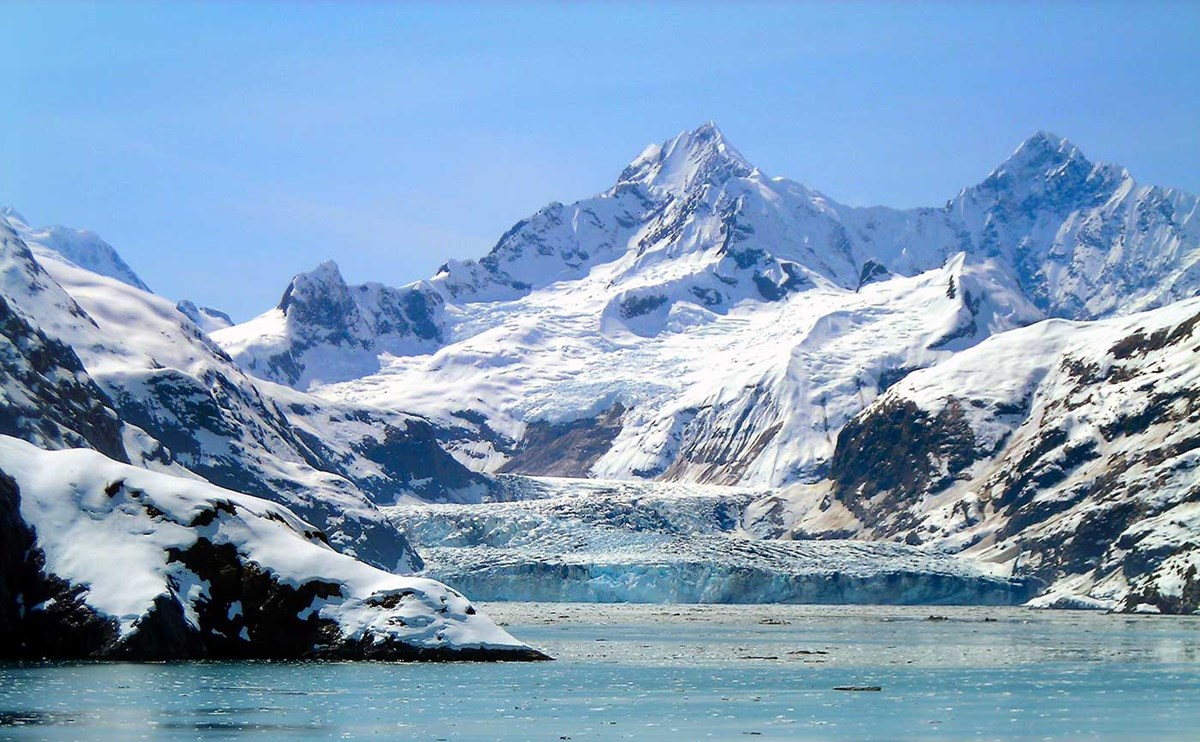
The calving is over in a matter of seconds, the aftermath in a minute, maybe two. But the sight and sounds of this event, unique in a lifetime of travelling, will stay with me forever.

